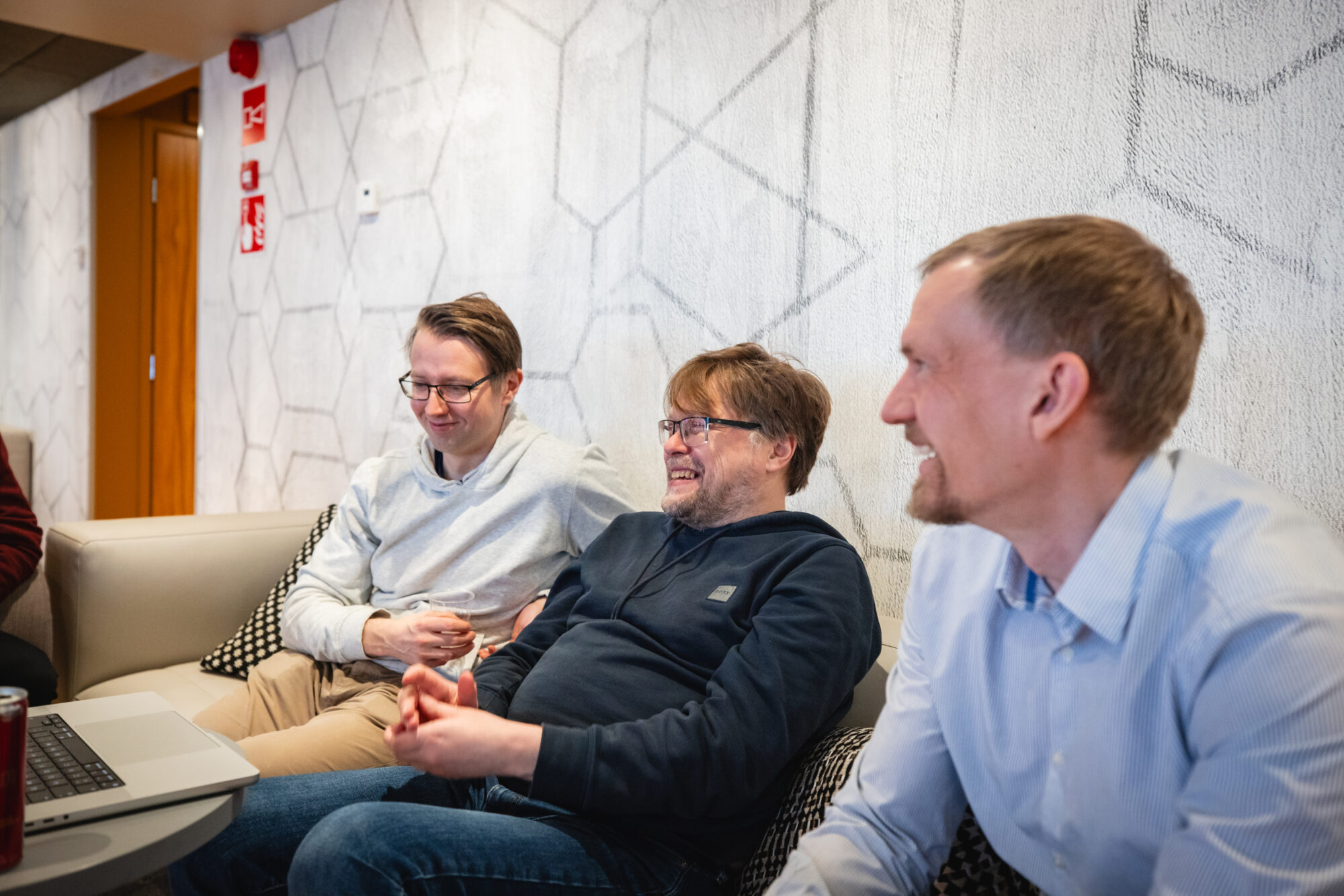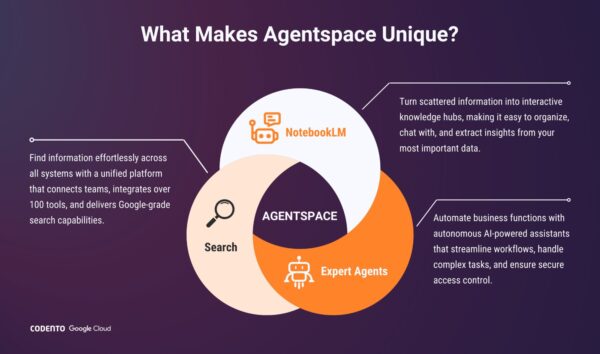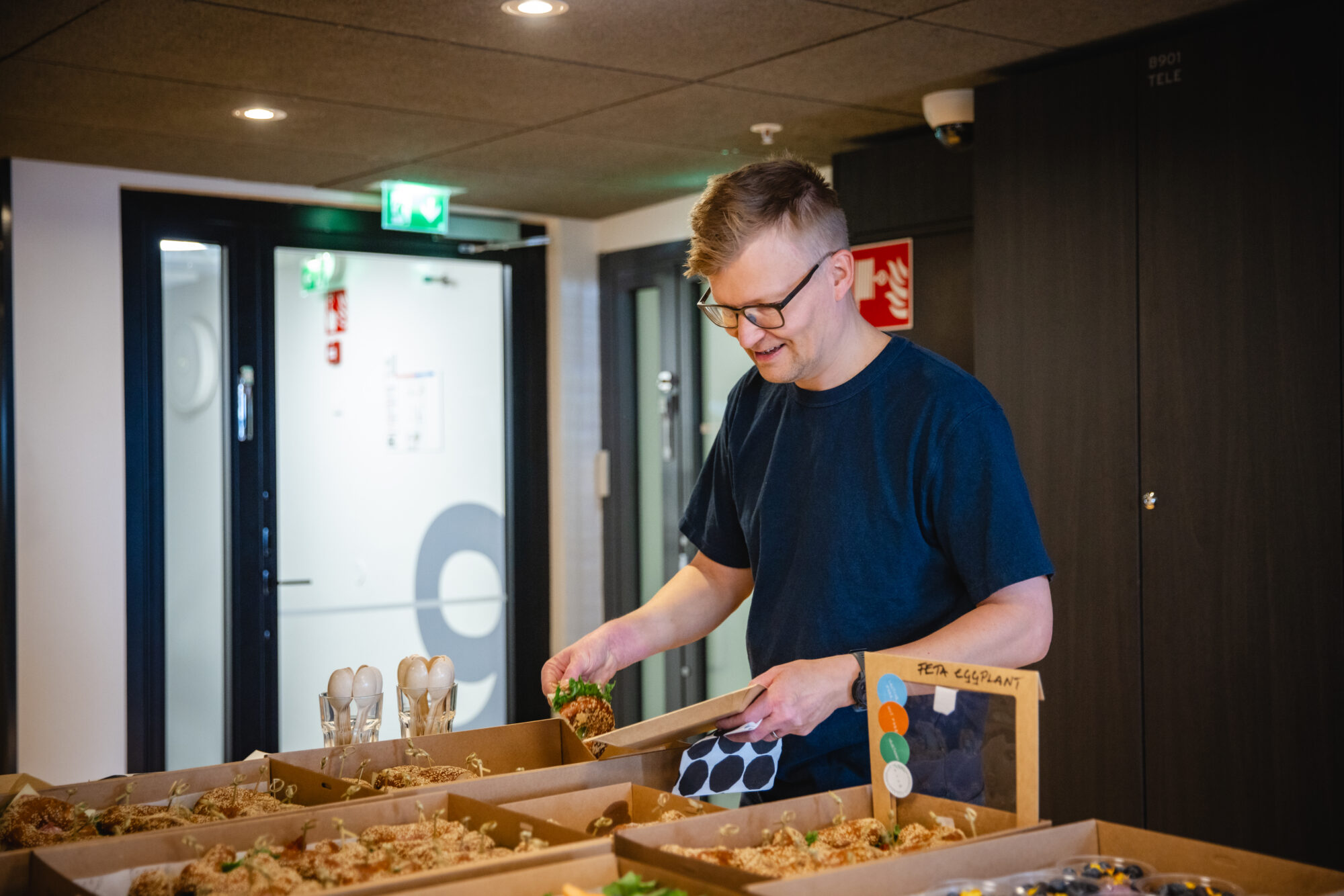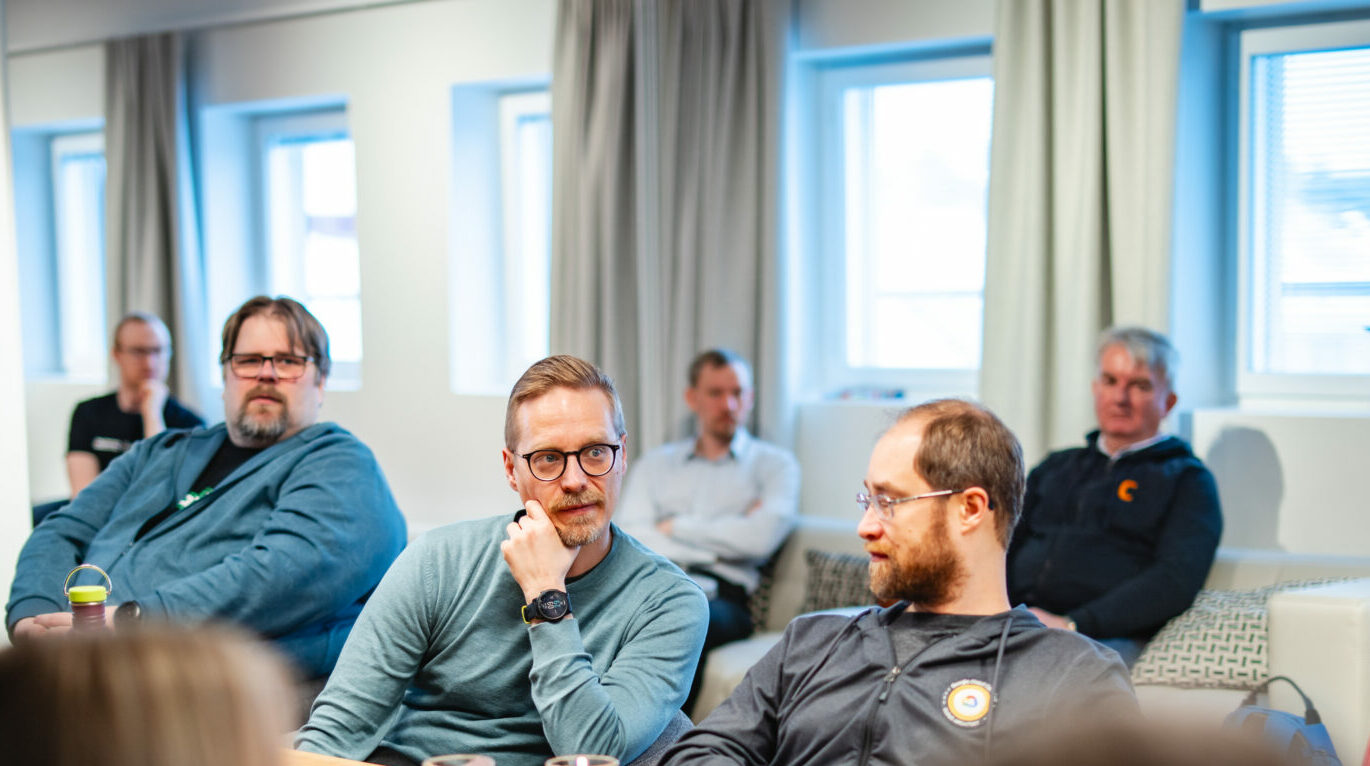The Best of Google: Agentspace
Google’s novel combination of AI tools promises to illuminate the entire organization, from HR to marketing and from sales to software development
In this blog series, we talked to two seasoned IT and data professionals, Codento’s very own SVP Markku “Pulu” Pulkkinen and Google Cloud’s Ted Schönbeck, about the upcoming transformation marked by Google’s newest AI innovation, Agentspace.
Businesses have long been digging their way out from data silos towards a shining vision of “collective brilliance.” In our previous blog, we delved into the persistent issue of data silos and the challenges they cause in all parts of the organization. We also explored Markku’s decades-spanning journey in enterprise data management and introduced Google’s newest AI innovation, Agentspace, which promises to revolutionize how enterprises harness their data.
Now, let’s dive deeper into how Google Agentspace aims to deliver on its pledge of collective brilliance across the organization.
Value for All from the Best of Google
According to Google Cloud’s Nordic CTO, Ted Schönbeck, Agentspace’s innovativeness lies in bringing together the best of Google. Firstly, it acts as a centralized, company-branded access point for information, featuring over 100 built-in connectors to various systems and Google’s enterprise search capabilities. Secondly, NotebookLM, Google’s AI-powered research and writing tool, enables users to synthesize complex information by creating notebooks and chats from up to 100 sources. Additionally, NotebookLM can generate remarkably natural-sounding AI podcasts from any data. Thirdly, Agentspace provides a platform for rapidly developing autonomous AI agents tailored to diverse enterprise functions, from HR and creative teams to finance and strategy.
A prevalent challenge in AI deployment is the risk of hallucinations, wherein AI systems generate inaccurate or misleading information. According to Ted Schönbeck, Agentspace directly addresses this through a dual-pronged strategy. Firstly, it leverages the advanced reasoning capabilities of Google’s Gemini AI, coupled with Google-quality search and comprehensive enterprise data integration. In his recent LinkedIn post, Ted quoted a benchmark study where Gemini 2.0 clearly beat the competition in the amount of hallucinations. Secondly, Agentspace mitigates the inherent risk of hallucination associated with general large language models by grounding its AI within the specific context of your enterprise data. This focused approach ensures significantly enhanced accuracy and reliability, minimizing the potential for extraneous data correlation.
When we asked about the sweet-spot customer segments, Ted elaborates on Agentspace, currently available in early access preview for selected clients: “Agentspace excels in complex data environments. Its technology-agnostic architecture, seamlessly integrating with platforms like Microsoft, Google, and Salesforce, ideally suits large enterprises with heterogeneous data ecosystems.” Furthermore, Ted continues that Agentspace’s value proposition extends from large corporations to smaller, agile organizations. “I have been discussing with many digital-native startups, who have been extremely interested. Such organizations, able to move fast, can achieve rapid implementation and immediate operational benefits,” he envisions.
A key strategic advantage of Agentspace is its modular deployment model. Organizations can adopt functionalities incrementally, beginning with readily available solutions like NotebookLM Enterprise. This phased approach allows for tailored implementation and optimized resource allocation, ensuring a seamless integration aligned with specific business objectives.
Illuminate Every Function of Your Enterprise
At Codento, a Finnish Google Cloud Premier Partner, we deliver AI-powered solutions to Nordic customers. Our team’s expertise and innovation commitment position us as the strategic partner for organizations seeking to maximize their data-driven potential.
According to Ted Schönbeck and Markku Pulkkinen, the transformative power of AI technologies, exemplified by solutions like Agentspace, will revolutionize operational efficiency across all organizational functions. As we envision, Agentspace will serve as a critical intelligence layer, illuminating enterprise-wide insights.
In the past couple of years, working with Google Cloud AI, we at Codento have already witnessed success with our Google-Cloud-based HR AI Agent, which automates routine tasks and frees up valuable time for HR leaders and individuals while ensuring data privacy and security. Agentspace represents the next evolution of AI-driven optimization. Beyond streamlined HR data management, it empowers us to deliver strategic value to key stakeholders, such as Chief HR Officers. We are developing solutions that address organizational needs proactively, automate complex workflows, and provide data-backed decision support. While doing all this, Agentspace ensures transparency through source document attribution, mitigating the risk of AI-generated inaccuracies.
In our customers’ sales functions, we can finally realize the vision of the sales representative getting a tailor-made, easy-listening podcast that includes a full recap of customer developments, industry events, and the latest company solution updates. Agentspace will enable every star seller to stay informed, enhance customer relationships, and drive innovation that combines customer insights, market data, and the organization’s intellectual property.
For our clients’ marketing teams, Agentspace will empower actionable insights into end-customer preferences without requiring an in-depth understanding of every product development feature. Marketers can focus on analyzing customer data and trends, delivering valuable feedback to engineering teams, and ensuring that product innovations align with market demands and customer needs.
Software teams, in turn, can automate their engineering processes, proactively fix bugs and vulnerabilities before they occur, and optimize codebases using data-driven insights. Agentspace facilitates more efficient workflows, higher-quality software, and faster delivery times, ultimately enhancing the overall development lifecycle and product reliability.
Let People Excel at What They Do Best
Overall, Google Agentspace promises to finally break down the data silos. It does this by combining the unmatched search capabilities of Google, the novel ways of interacting with data through NotebookLM tools, and the endless opportunities for building fit-for-purpose AI agents for any use case one can think of.
Technology as such, however, does not change anything. As Google’s Ted Schönbeck nicely frames it: “Partners like Codento play a crucial role in helping customers get the most out of Agentspace. Our partners’ role is not just about building and making the platform work, but especially helping organizations really adopt the solutions to their everyday lives – helping with the transformation, as that is what it is.”
Ted also emphasizes that Agentspace, like AI in general, is not about getting rid of your people: “Humans don’t compete with AI, but rather with other humans using AI,” he concludes, “Agentspace frees people to do what people are the best at.”

Ted Schönbeck is Google Cloud’s Nordic CTO. He has more than 20 years of experience in IT, with companies like IBM, Dell, VMware, and Red Hat. Ted is a passionate cloud, digital transformation, and AI evangelist and a frequent event speaker.

Markku Pulkkinen, SVP at Codento, leads Google Cloud partnerships and business development, drawing on 25+ years at Microsoft and Oracle. He’s a proven leader in public cloud adoption, focused on driving productivity and potential through technology.













